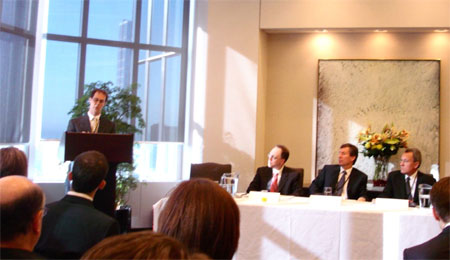“we don’t invest in startups, we like companies that we can understand” – commented one speaker at the breakfast session on Alternative Financing held this morning at Goodman&Carr LLP.
The session was fairly interesting with representation from a wide range of finance providers from the trouble investment community covering the “whole” range from subdebt lending through asset based lending, equipment financing, inventory secured financing to private equity.
Beyond your standard I-banking equity and senior debt financing offerings, these do pretty much represent the gamut of alternate financing options. One type of institution though was conspicuously absent this morning: venture capital. Despite the difference in their vehicles, all of the institutions represented today pretty much seem to be chasing the same set of customers. here are the criteria, these lenders want to talk to you:
- Established company (4yrs+ history for due diligence)
- Experienced management team
- Consistent (and preferably growing) cash flow
- 3-5M (or better) pretax net income
- Financing requirements in the 3-10M range
- Target industries: manufacturing, wholesale, service and retail
- Typical scenario: Management buyout, acquisition, working capital for rapid growth companies
Not one mention of software or knowledge industries in general and no one talking about early stage financing. Now to be fair, this type of lending is no doubt, on a dollar value basis, exactly where the bulk of the corporate lending market is. Even in silicon valley, the bulk of economic activity is driven likely by established companies. However, all have to start somewhere and it’s startups that drive a great deal of innovation (especially disruptive innovation) within the economy. If the Ontario economy is to grow beyond manufacturing and the like, if Toronto is to become a leading ICT cluster, I’ll tell you one thing, it wasn’t happening in this room this morning.
There’s clearly a large gap between the where the ideas are developing and the money is in this city these days. A gap that I hope activities like BusinessCamp I hope will help to, at least in some small way, start bridging.

